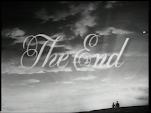
This will be the first of a series of entries on and around the idea of cult pleasure. As an earlier post about the brilliance of an incidental element of Twilight: New Moon may have hinted, I am someone who is periodically drawn to a kind of film appreciation that could be called cult – specifically: I occasionally praise the joys of the perplexingly terrible, the thrillingly awful. My desire to write about this subject comes, in one sense, simply from the fact that I feel a need to share my deep enthusiasm for a few things that most people would likely agree are ‘bad’. Another reason, however, is that I find cult pleasure a fascinating phenomenon in itself, and believe it has the potential to encourage film criticism to address a number of important issues. For instance…
Evaluation
Value is too often the unacknowledged spectre at the film studies feast. Regularly functioning implicitly (sometimes seemingly unconsciously) rather than being openly engaged with, the question of artistic value will often be ignored in favour of a supposedly more ‘objective’ tone. Yet, try as we might, we can – of course – never wholly avoid it. One benefit of the kind of cult pleasure I’m concerned with is that it manages to place evaluation front and centre, demanding we address and interrogate the concept. Firstly, if we are calling something ‘bad’ then we immediately face the responsibility of justifying why: for whom? according to what criteria? Secondly, if we then wish to claim that something is pleasurable (or interesting, or valuable) despite being ‘bad’, our reassessment will be based around matters that were clearly not taken into account by the original evaluation. Given that cults are by definition grounded in taste communities, they also require that we acknowledge the irreducibly personal (and indeed social) nature of value. This leads me on to another issue...
Passion
Although it would hypothetically be possible to write about a cult object which you yourself didn’t share in the cult of, I would imagine that it would be both rather difficult and rather tedious. Given this, cult pleasure has the power to inject passion and love into the critical act – particularly since the pleasure of the so-bad-it’s-good also seems absolutely to require explanation and elaboration. In the same way as cult fans construct communities in order to share their passion with like-minded people, so can cult pleasure push the critic to be similarly generous.
Intention
Finally, another supposedly hoary critical concept with the potential to be revitalised by thinking about cult pleasure is artistic intention – a concept that has been unfashionable in the academic discussion of the arts for around half a century. While the idea of gay audiences reappropriating Rock Hudson movies or college students getting stoned in front of anti-drug morality tales may seem to fly the flag for the instability of textual meaning, what such cult appreciation also quite obviously presupposes is that we can accurately gauge the original intention of these films. This should by rights make us revisit this most fundamental – and, again, largely ignored – issue for criticism: to what extent can we presume to prove or infer intention, given that we clearly and necessarily do so regularly?
Over the next week or two I will be trying to probe some of these questions and issues. I should say that I’m choosing to do this now since, coming up, I’m scheduled to attend screenings of two of my own favourite pieces of cult phenomena: The Room and After Last Season. My next post, though, will be about R. Kelly’s infamous Trapped in the Closet, so for now I will simply leave you with a clip from this masterpiece of absurdity. Enjoy.

No comments:
Post a Comment